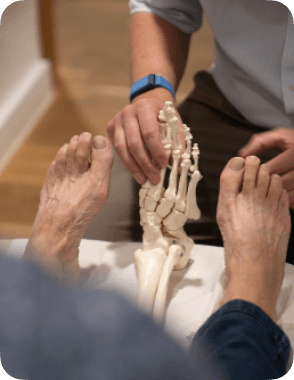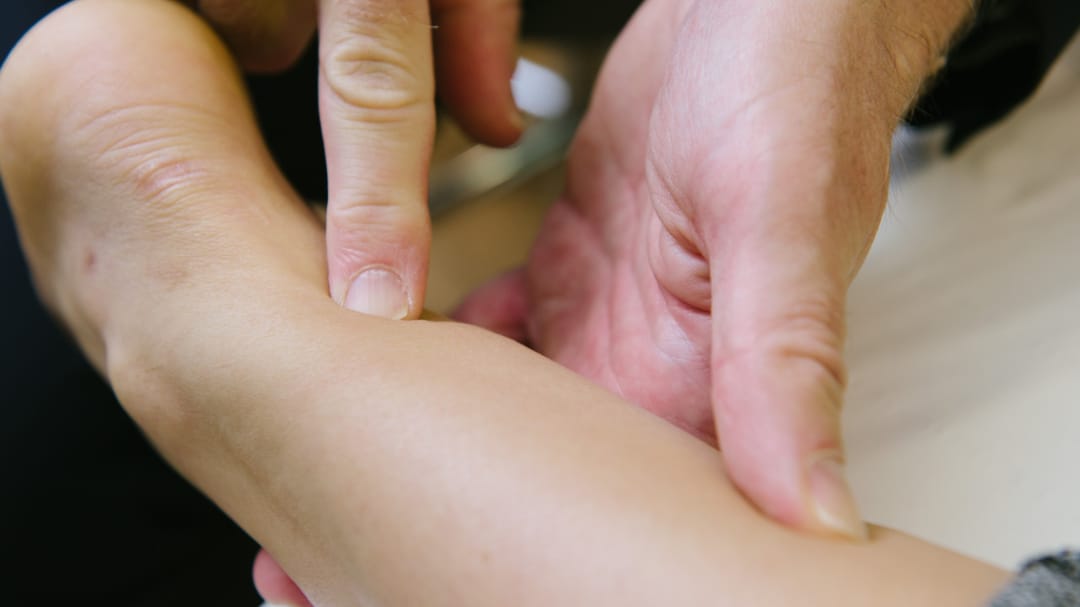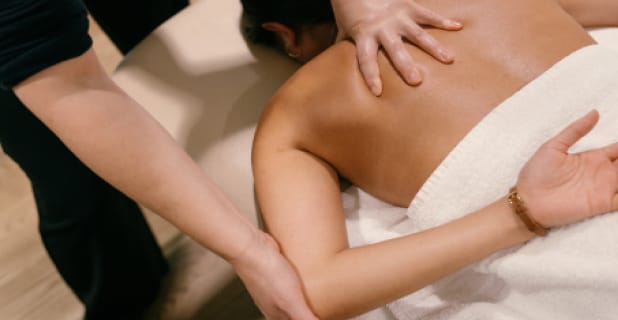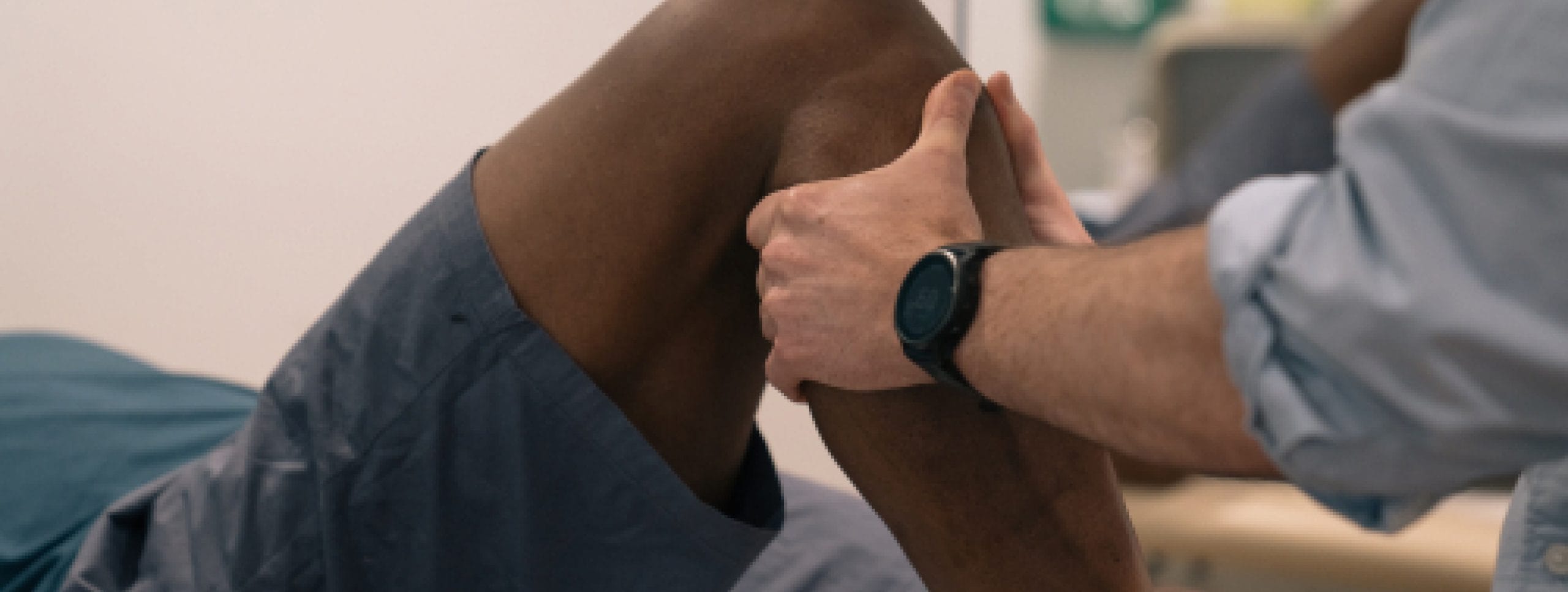What Is An Osteopath?

Pure Sports Medicine
- 30 January, 2019
- Osteopathy
- 5 min read
Did you wake up with back pain this morning? Did you go to bed with a headache that stopped you getting a good night’s sleep? Or do you just feel tired and achy all over?

With 31 million working days lost in 2016 due to musculoskeletal problems, including low back pain which 1 in 8 people will experience in their lifetime, you are not alone.
The questions are many: Why am I in pain? What can I do about it? What options are there for me? Well, one is seeing an osteopath, alongside roughly 30,000 other people who consult with one every working day. The following post will hopefully help you decide if seeing an osteopath right for you by answering the following questions:
- What is an Osteopath?
- What is osteopathic medicine?
- What can an Osteopath help with?
- What can I expect from treatment?
- How often will I need treatment?
What Is An Osteopath?
Osteopaths are experts in the structure and function of the human body, specialising in the diagnosis, management, treatment and prevention of musculoskeletal disorders. Osteopaths view the well being and health of an individual as being dependent on the proper and harmonious functioning of the body’s muscles, joints, ligaments and connective tissues, as well as acknowledging the influence of the vascular, nervous and immune systems.
Training involves 4-5 years of extensive academic and practical learning, including areas such as anatomy, physiology, pathology and neurology, alongside a minimum of 1000 supervised clinical hours consulting, examining, diagnosing and treating members of the public.
Once qualified an Osteopath must be registered with the General Osteopathic Council (GOsC) and adhere to their strict Regulations and Standards of Care and Ethics, be fully insured and meet yearly continuing development requirements.
Osteopaths use a combination of manual techniques, exercises and lifestyle advice to remove barriers to, and therefore assist the body in, repairing injuries and returning to optimal function and health. They may also provide treatment and advice to reduce your risk of future injuries and pain.
What is Osteopathic Medicine?
Osteopathy was founded in the 1870s by Andrew Taylor Still, a physician and surgeon disillusioned with the existing model of medicine, who felt that given the right conditions and assistance, the body could heal and repair itself of almost any illness or injury.
Today we know that for many conditions and injuries this belief is indeed true, and we see it in action every day, from torn muscles and broken bones healing to the immune system defending us from and overcoming infections. However, there are many things that prevent or slow down these processes, and many things that can help speed them along, ensuring an optimal and speedy recovery. It is here that osteopathy may be able to help you, primarily by ensuring the optimal function of your musculoskeletal system.
What can Osteopathy Help Me With?
An Osteopath may be able to help with a wide range of issues including, but not limited to:
- General Aches and Pains
- Sports injuries and tensions
- General, acute and chronic backache and back pain
- Sciatica, Neuralgia, muscle cramps and spasms
- Joint related, Arthritic and Rheumatic Pain
- Uncomplicated neck pain (i.e., not whiplash related)
- Neck-related headaches and Migraine prevention
- Shoulder pain and elbow pain
- Digestive problems, Circulatory problems and even difficulty relaxing
What Can I Expect From Treatments?
At your first appointment, which generally lasts 45 minutes to an hour, your osteopath will take a confidential, detailed and comprehensive case history, asking questions and listening to your answers relating to your reason or reasons for booking the appointment, as well as your general medical health and any other medical care, including medications, you are receiving.
If your case is appropriate for osteopathic care, the next stage is a thorough structural and functional examination and assessment. You will likely be asked to remove some items of clothing, such as a shirt and trousers to allow a more accurate visual assessment of spinal curves, movements and so on. This is also an opportunity for the osteopath to screen for common findings that you may not be aware of, such as moles on your back or varicose veins in your thighs, that may need an onward referral to your GP.
You can, of course, bring shorts and a vest top if this would make you more comfortable, or we can provide you with the same at the clinic. You can also ask for a friend or relative to accompany you throughout your appointment.
Examinations usually begin with a standing assessment of your posture, spinal curves and other anatomical landmarks, such as shoulder blades, followed by simple movements to observe how they affect your symptoms. Some movements may be directly related to your complaint, such as asking you to bend forwards and arch backwards if you present with low back pain, others may seem unrelated, such as squatting, or neck movements, but are intended to identify problems in other areas that may be influencing the site of pain and hindering its proper recovery.
Next is the hands-on examination of the muscles, joints, ligaments and other tissues, using a highly developed sense of touch called palpation, to identify spasms or protective tightening, restrictions of movement due to pain or your personal anatomy, acute or unresolved inflammation, tissue injuries and so on.
If necessary additional clinical examinations may be performed before, during or after the hands-on examination, ranging from neurological sensation and power testing, to taking your blood pressure or listening to your lungs, all to ensure a complete picture of your health is obtained and to improve both the safety and accuracy of your diagnosis and proposed treatment plan.
Your osteopath will then put all of the information and findings together to provide you with a diagnosis, a potential treatment plan and any need for further investigations or a different therapy altogether. Not everybody or every complaint is suitable for, or likely to respond to, osteopathic treatment and it is the osteopath’s responsibility to ensure you are advised to see the most clinically appropriate and skilled practitioners for your case.
With your agreement, or consent, treatment is normally hands-on and at Pure will be very structural in nature, involving a combination of massage techniques, skilled manipulation of joints, using both rhythmical movements and more rapid joint manipulations, and exercises. Additional advice on lifestyle, activities and personalised exercise plans are common. Some or all of these may be suggested and you then decide what you are comfortable with, so not everyone has their back “cracked” or their muscles “rubbed”.
Discussions between patient and osteopath occur throughout the appointment, aimed at ensuring you have a full and thorough understanding of what is happening both in the consultation and after, with regards to your health and diagnosis, any proposed treatment and any associated risks, which range from short term post-treatment soreness for 24-48 hours, to more serious reactions or injuries. These are rare and highly unlikely but must always be presented to you. You will be asked for consent to continue at many points throughout and you are able to withdraw that consent at any point. You are also encouraged to stop your osteopath to ask any questions or to express concerns that you may have. I often say that if I cannot explain why I am asking or doing something, then I should not be asking or doing it!
How Often Will I Need Treatment?
Appointments are normally once a week and it is likely that more than one treatment will be required, which will be discussed and reviewed at each occasion. Please be aware that sometimes symptoms initially stay the same, or even worsen before they improve, dependent on what is actually wrong, however, most people feel immediate relief following osteopathic treatment.
Follow up appointments are usually 30 minutes and are initially planned on a weekly basis for 2-3 weeks, before increasing to 2 weeks or even a month later. Obviously, this is dependent on both your symptoms and your response to treatment and will vary from patient to patient.
Overall an osteopath can be a great help for many problems you may be experiencing. Even if they can’t help you themselves, they can be a great first point of contact for advice and appropriate onward referral, so book an appointment below and see how we can help.

Advice
Over the last 20+ years our experts have helped more than 100,000 patients, but we don’t stop there. We also like to share our knowledge and insight to help people lead healthier lives, and here you will find our extensive library of advice on a variety of topics to help you do the same.
OUR ADVICE HUBS See all Advice Hubs

